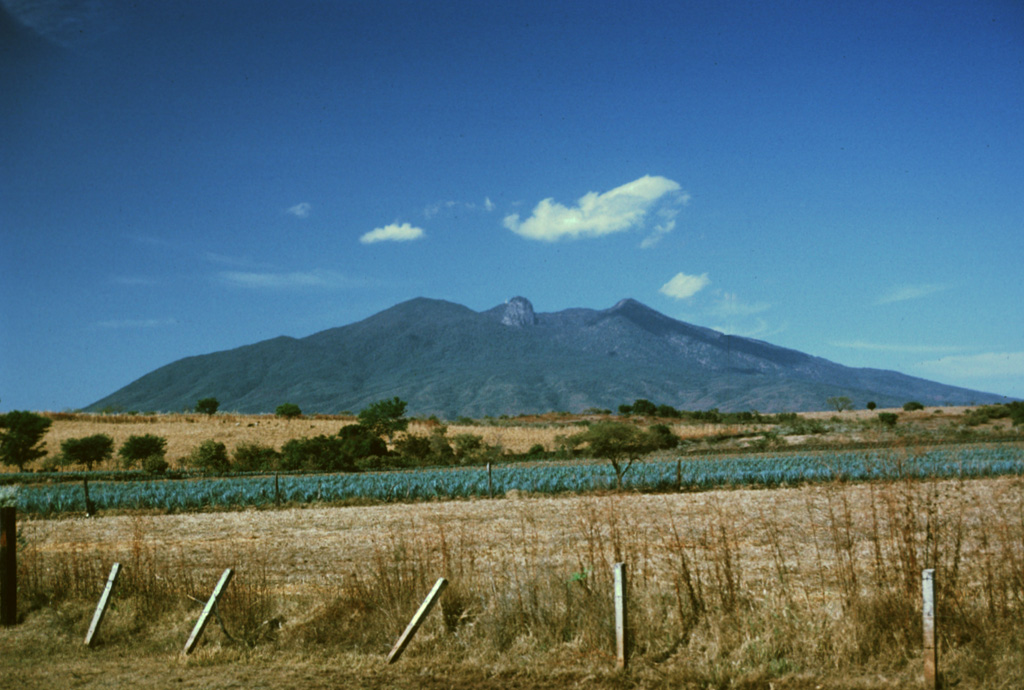Global Volcanism Program | Image GVP-07579

Volcán Tequila is an eroded andesitic-dacitic volcano of Pleistocene age that rises about 1800 m above the surrounding plains. Tequila is the SE-most of a chain of calc-alkaline stratovolcanoes NW of Guadalajara. A prominent 300-m-high summit spine, similar to that at Sangangüey volcano, can be seen here in the center of the summit crater, which was been breached to the NE, in the direction of the photo. The volcano is surrounded by a series of older flank rhyolitic lava domes, obsidian flows, and basaltic cinder cones.
Photo by Paul Wallace, 1989 (University of California Berkeley).
![]() This image is made available under the Creative Commons BY-NC-ND 4.0 license terms.
This image is made available under the Creative Commons BY-NC-ND 4.0 license terms.

Tequila
